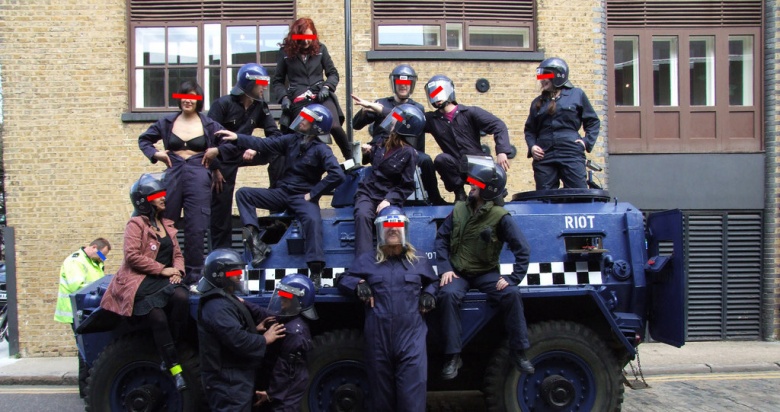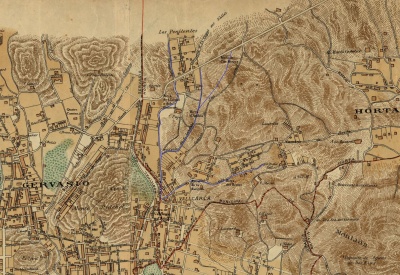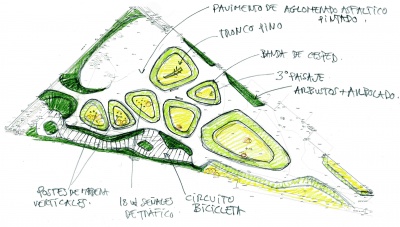
Sublime or subversive: Activist culture in reclaiming public space
Artículo --algo antiguo ya, 2005-- en inglés sobre la cultura activista en torno al espacio público. Algunos ejemplos relevantes (Critical Mass, Space Hijackers, etc.), algo de teoría y algo de bibliografía.
Resumen:
The rise of civil society movements to defend public space represents one of the most powerful mechanisms for changing walking culture. Activist groups such as Critical Mass, Reclaim the Streets, Space Hijackers, and Mobile Clubbing have utilised a combination of humour, guile, and creativity to challenge the orthodoxy of the public relationship with city space. The research utilises surveys and interviews to understand the motivations behind these organisations and to highlight the techniques utilised to change public perspectives on street culture, such as unannounced sporting and musical events on city streets.
Traditionally, there have been a range of measures available to community-based groups to raise awareness of public space issues. The advent of information and communications technologies such as email and text messaging have given activist organisations powerful new tools in realising citizen mobilisation. Their activities are fomenting the creation of an urban fraternity of like-minded citizens who can readily organise significant numbers into the streets.
Despite the energy and creativity of such groups, local authorities have sought to curb their activities through legal restrictions. However, the research shows that these types of campaigns may in fact be quite effective mechanisms for instilling public life back into city streets. The research concludes by suggesting how public officials can utilise similar mechanisms for achieving the policy goals of increased use of public space and greater citizen participation.
Índice:
- Introduction
- Community-based actions
- Critical Mass
- Reclaim the Streets
- Space Hijackers
- Flash Mob
- Mobile clubbing and pillow fight clubs
- Democratising public space
- Private sector uses of public space
- Responses to activist actions
- Conclusions
Archivos relacionados
Actividad de grupos y nodos
-
25-01-16
Diferentes estudios demuestras que el diseño de las ciudades afecta a sus usuarios no sólo en la forma de percibir los espacios, tambien en su salud. Un artículo analiza el urbanismo y su diseño desde la perspectiva de la salud ante el peatón.
-
15-12-15
Hoja de ruta para la redacción del conjunto de documentos que definan los protocolos GRRR de cesión/acopio de recursos
-
15-12-15
Panel realizado para la séptima edición de REHOGAR 15-31 de Octubre 2015
-
25-11-15
Contra la destrucció del barri de Vallcarca que l'ajuntament de Barcelona en Comú no pretén aturar.
-
28-10-15
Sábado 7 de noviembre en el skatepark de Can Zam, Santa Coloma de Gramenet
-
21-10-15
El concurso convoca designer, ingenieros, arquitectos o estudiantes tanto nacionales como internacionales para que diseñen un elemento de mobiliario exterior para auto-construccion. Premio € 700. Plazo de entrega 23 de noviembre 2015.
Bases: http://www.materiarigenera.com/uploads/3/1/4/3/31431687/1_es_pon_tu_las_...
Pagina web del proyecto Ma.te.ri.a: http://www.materiarigenera.com/
-
15-10-15
Este trabajo se realiza en Mateguadua, un barrio que se encuentra a las afueras de la ciudad de Manizales y con caracteristicas que entrelazan lo rural y lo urbano. Nos encontramos con una comunidad dispuesta a trabajar por sus espacios, después de reunirnos con ellos, se planteo una Minga o Convite (trabajo comunitario), donde contamos con la participación de los niños, jovenes y adultos, con quienes a partir del trabajo en equipo, empezamos por adecuar el espacio existente, limpiandolo interior y exteriormente, y resignificandolo a traves de la intervención con pintura, también se compart
- 1 de 27
- ↪







Comenta